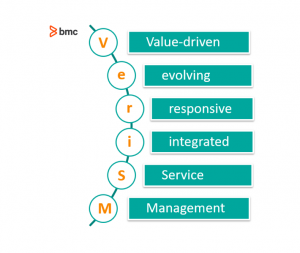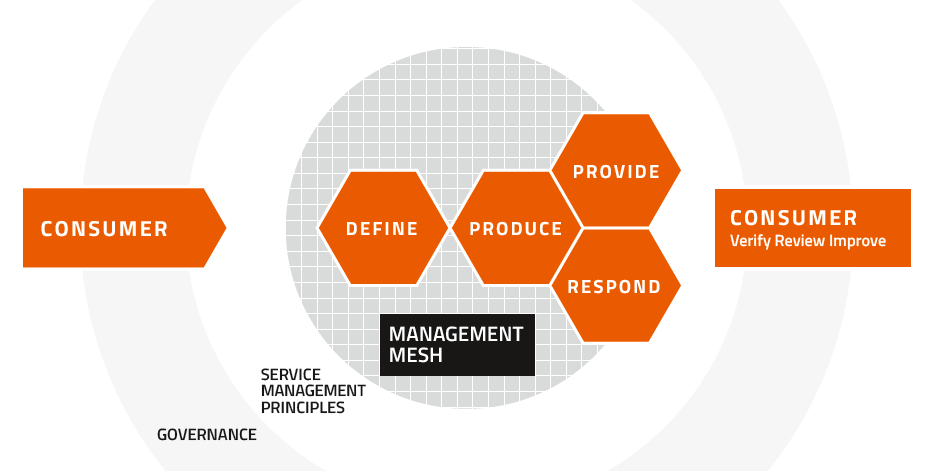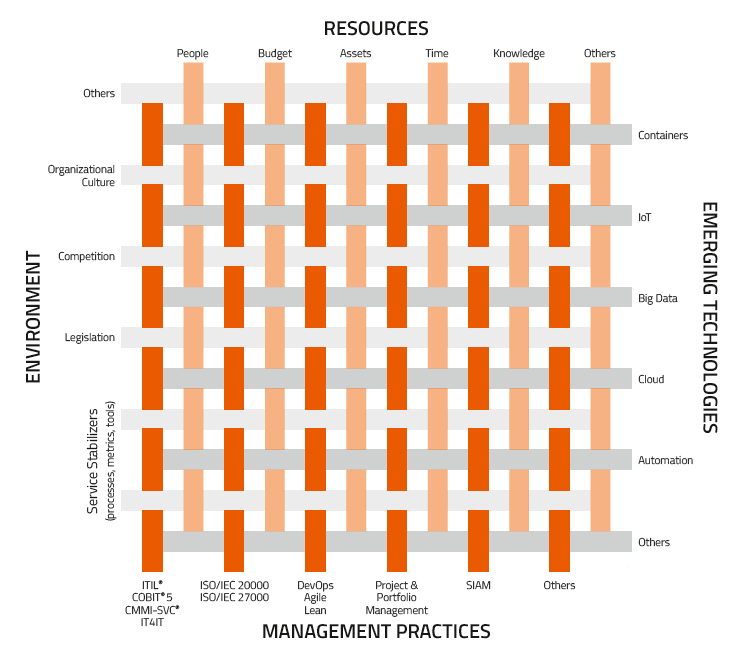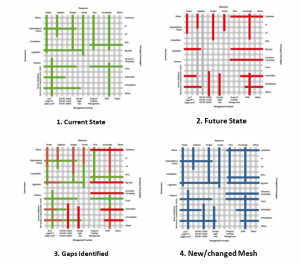The VeriSM Management Mesh Beginner’s Guide


There is more than one way to skin a cat. And the same can be said when it comes to service management. With so many approaches, methodologies, and standards, it can get quite confusing for anyone depending on their evolving context.
Of course, there are pros and cons for each approach, and what’s good for the goose might not be the best for the gander. One body of knowledge has a different approach—why not pick what works for your context?
The VeriSM approach that was unveiled in 2017 does exactly that, by helping organizations to evolve their operating model in a flexible and responsive way, through an integrated selection of management practices. Let’s explore what that looks like in detail.
(New to VeriSM? Start with our VeriSM introduction.)

The VeriSM approach was developed through a partnership with the global service management community in response to changing demands on service management and the impact of digital transformation. Aptly titled ‘an approach for the digital age’ the term VeriSM stands for:
VeriSM is opposed to a ‘one size fits all’ approach on the basis that organizations are different in many aspects such as size, portfolio, culture, market, customer segments, etc. This approach is unique in that it:
The VeriSM model starts with the consumer defining their outcomes and ends with the consumer verifying that the outcomes have been achieved leading to value. For the service provider, adopting the VeriSM model requires the following components as shown in Figure 1 below:

The VeriSM Model
A cursory glance at the VeriSM model would immediately identify the common elements you expect to see in any service management approach. The only differentiator would be the management mesh which is pretty unique. So, what is it?
The Management Mesh is a concept that proposes a method to manage and use the multitude of service management frameworks, standards, methodologies, management principles and philosophies. The mesh is defined by four elements that influence or directly contribute to product and service delivery:
The combination of these elements like strands in a woven fabric provides the capability that a provider of services is able to leverage upon to meet customer needs effectively. The Management Mesh can be visualized with example elements as shown in Figure 2 below:

The VeriSM Management Mesh
The Management Mesh is one of the trickier components to get to grips with when it comes to the VeriSM model.
It is the sauce that makes the VeriSM model flexible and adaptable for any organization regardless of context. The specific elements of mesh need to be defined by the organization, including the measurement scale or model used to quantify the different contributing elements of the mesh.
This is carried out in alignment to the four stages of the model as follows:
A pictorial representation is shown below. The green lines represent the current state, the red lines the desired future state, and the blue lines the new mesh after the gaps have been identified and a solution developed.

Progressing the Management Mesh through the VeriSM model stages (Source: VeriSM: Unwrapped and Applied)
One of the great things about the Mesh is that it provides a clear visual presentation of what an organization should consider in the journey of service management. The folks at VeriSM have developed a tool that organizations can use to understand or build their own mesh.
Well, no approach is perfect. The VeriSM model is actually pointing that out by saying that one needs to consider the different tools in their box and figure out two things:
This is invaluable advice, as an organization can introspect from strategic and tactical perspectives, and identify an improvement roadmap to meet customer outcomes and deliver value.
However, challenges arise if the organization doesn’t understand those elements, or doesn’t have the capacity to acquire and adapt the required elements to fill the identified gaps.
Should the organization find itself in this position, then the mesh simply becomes a good piece of artwork to hang on the office walls. For example, if the context requires SIAM as a management practice, or IoT as an emerging technology, then lack of knowledge or financial resources, or lack of the right culture to change the way of working will invariably lead to a hurdle for the organization in getting to where it needs to be.
In order to get to where the VeriSM management mesh points, organizations must therefore be prepared to:
Another challenge could be complexity especially where the number of components in one element are much more than others. A square looking management mesh is perfect, but might not be ideal. An organization might end up with something akin to a strange trapezoid which might not be visually appealing when it comes to identifying gaps.
Finally, the organization might decide to have multiple meshes for different service offerings or evolve rapidly over the four elements, leading to challenges in keeping track with up-to-date management meshes that should be available to all stakeholders.